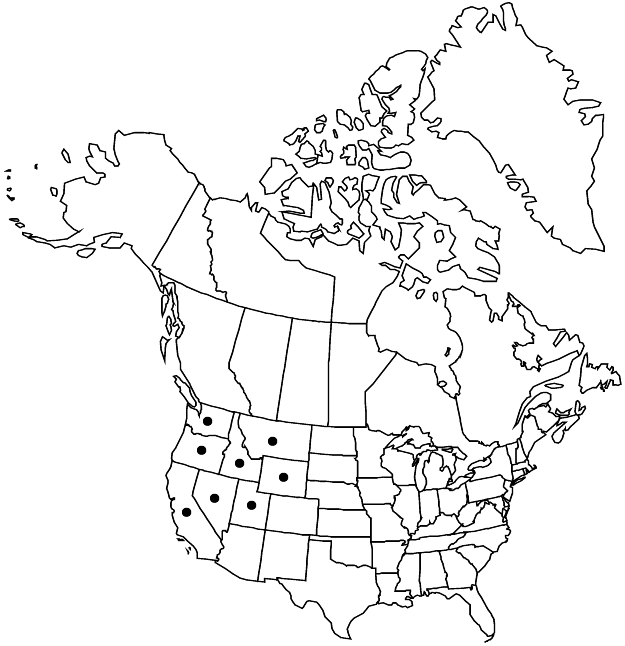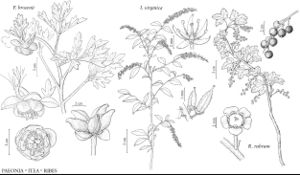Paeonia brownii
Fl. Bor.-Amer. 1: 27. 1829 ,.
Plants 20–40 cm. Leaves usually 5–8 per shoot, primary divisions 3–6 × 2–5 cm, bases notably narrowed (stalklike), ultimate divisions mostly elliptic to obovate, apices usually obtuse to rounded, surfaces usually ± glaucous (at least abaxially). Flowers: petals maroon to bronze, margins yellowish or greenish, orbiculate, 8–13 mm, usually shorter than inner sepals; filaments 3–5 mm; anthers 2–4 mm. Follicles 2–4 cm. Seeds cylindric, ca. 11 mm. 2n = 10.
Phenology: Flowering (Mar-)May–Jun(-Aug).
Habitat: Open, dry pine forests, sagebrush, mountain brush, aspen
Elevation: 200-3000 m
Distribution

Calif., Idaho, Mont., Nev., Oreg., Utah, Wash., Wyo.
Discussion
Reports of Paeonia brownii from Canada evidently stem from early confusion between Vancouver, British Columbia, and Vancouver, Washington (H. J. Scoggan 1978–1979, vol. 3). The type of P. brownii was collected on Mount Hood in Oregon, about 75 kilometers from Fort Vancouver (now Vancouver), Washington, which was a base for the collector, David Douglas.
Selected References
None.
